Santa is all about Coke.
No joke. Fat and jolly Santa with the red suit and cap, thick black belt,
sooty boots, rosy cheeks, luminous eyes and brighter-than-white teeth is
the product of a genius advertising campaign created by Coca-Cola in the
1930s.
Now, before you go off in a huff
and hide this article from Santa-believers, please keep in mind that it's
no secret our revered Claus is corporate-sponsored. Coca-Cola remains out
of the closet about its role in popularizing Santa. The company is so proud
that it has documented the creation of the Coca-Cola Santa in a gallery
exhibition called "Advertising As Art," which ran at the Louvre in 1996.
In the late 19th century, when
Coca-Cola first started selling Coke, the beverage was touted as a tonic.
The company promoted the featured ingredient of cocaine, or coca bean extract,
which it said guaranteed a renewed self--one with greater agility and acuity.
Coca-Cola paid pharmacists a commission for the sale of this medicinal
beverage if drug stores allowed Coca-Cola to install
a carbonation tap on the premises.
In the 1930s, Coca-Cola needed
to re-evaluate its business prospects and consider how it was going to
survive the Depression. The more controversial aspects of the beverage
had been resolved (as early as 1903, coca extract was removed and caffeine
took its place). Beverage sales were slowing down--especially in the winter
months.
In 1931 Coca-Cola expanded its
target audience from the adult who lacked pep to all family members who
required cheer and joy. Coca-Cola was a great taste to be enjoyed by everyone!
The company decided to launch an extensive advertising campaign to demonstrate
its new appeal. Pioneering the use of well-known artists to design ad campaigns,
Coke blitzed pharmacies and stores with promotional material.
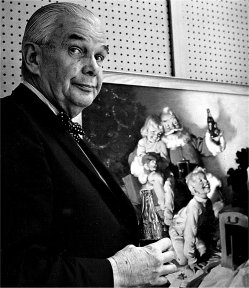 The
illustrations by one artist in particular, Haddon Sundblom of Sweden, took
off. He portrayed Santa as a portly white man in a red suit bringing joy
to families and friends simply with a bottle of Coke. It's this version
that we now see in shopping malls, greeting cards, commercials and Salvation
Army booths around the country.
The
illustrations by one artist in particular, Haddon Sundblom of Sweden, took
off. He portrayed Santa as a portly white man in a red suit bringing joy
to families and friends simply with a bottle of Coke. It's this version
that we now see in shopping malls, greeting cards, commercials and Salvation
Army booths around the country.
But Coca-Cola cannot be fully
credited for bringing Santa into the homes and hearts of Americans. The
history of Santa Claus, the mystery gift-giver, goes back well before the
time of the Coca-Cola company. In previous incarnations, Santa wore no
red suit. Santa's varied cultural roots include the fourth-century bishop
of Asia Minor; a Scandinavian dwarf or goat; the white-robed Kolyada, a
pre-revolutionary Russian girl who arrived atop a sleigh with accompanying
carolers; and the many religious gift-bearers associated with the Magi.
In each of these Old World depictions
of Santa, his costume bears no stain of red. In the United States, the
Dutch were primarily responsible for spreading the idea of Sante Klaas,
who was based on one of their revered bishops. Sante Klaas gave form to
the current myth of Santa and fleshed out his reputation as a gift-giver.
However, the visual image was not honed until much later, when Coca-Cola
created its Santa.
In 1822, an American professor,
Dr. Clement Clarke Moore, wrote The Visit of St. Nicholas, which is known
today as the The Night Before Christmas. His description of Santa suggests
a fat man, but in the gnomish fashion of the earlier European versions.
The poem reads: "His eyes how they twinkled! His dimples how merry!/His
cheeks were like roses, his nose like a cherry/His droll little mouth was
drawn up like a bow/And the beard on his chin was as white as the snow.../He
had a broad face, a little round belly/That shook when he laughed, like
a bowl of jelly./He was chubby and plump, a right jolly elf...."
Nearly 40 years later, political
cartoonist Thomas Nast drew St. Nicholas for Harper's Illustrated Weekly.
This version wears a woolly, furry suit and resembles a stout, bearded
elf; the Sundblom look is not apparent. Nast often created etchings in
black and white featuring elements that presaged the Coke Santa (i.e.,
the belted suit). However, in Nast's color renditions, Santa vaguely mirrors
the modern, commercial image--except the bright-red color is missing.
Here's where the genius of Coca-Cola
comes in. First, Sundblom's image of Santa Claus hit the right buttons
in terms of stirring the hearts and quenching the thirst of consumers everywhere.
Modeled on a retired salesman named Lou Prentice, Sundblom's Santa had
just the right combination of happy wrinkles, prompting Coca-Cola to hire
Sundblom to create Coke ads using this model over the next 35 years. Also,
Coca-Cola orchestrated an attack on the market with Santa-Coke propaganda.
Magazine advertisements were particularly effective, considering that during
that era, print publications had the influence TV does today: They were
able to communicate over and over and over again the same image and slogan
to a mass audience.
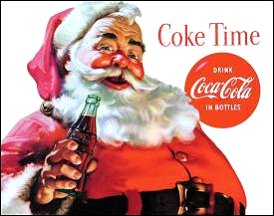 Point-of-purchase
promotional items were extremely common. Collectibles were another way
Coca-Cola expanded its presence--a strategy that is standard today for
many advertisers, from Nike to Joe Camel. Finally, Coca-Cola patented a
particular shade of red--that bright red used for Coke packaging and for
Santa's suit. All of the artists hired to work for Coca-Cola were required
to use this shade of red, influencing consumers, no doubt, to make the
constant association between red and Coke and Santa. This is perhaps the
biggest kicker, considering that there is little consistency with regard
to the color of Santa's suit between Nast's version, Moore's literary image
and early European portrayals.
Point-of-purchase
promotional items were extremely common. Collectibles were another way
Coca-Cola expanded its presence--a strategy that is standard today for
many advertisers, from Nike to Joe Camel. Finally, Coca-Cola patented a
particular shade of red--that bright red used for Coke packaging and for
Santa's suit. All of the artists hired to work for Coca-Cola were required
to use this shade of red, influencing consumers, no doubt, to make the
constant association between red and Coke and Santa. This is perhaps the
biggest kicker, considering that there is little consistency with regard
to the color of Santa's suit between Nast's version, Moore's literary image
and early European portrayals.
These days, the sacredness of
Coke's Santa has expired. Santa is ubiquitous, Coke is ubiquitous, but
no one really remembers that the two were at one time closely entwined.
It's a history that is mostly understood by public relations advisers and
college marketing students, and maybe the slew of museumgoers who saw the
"Advertising as Art" exhibit at the Louvre.
Sometimes Coca-Cola revives Sundblom's
Santa in a commemorative appeal to its loyal consumers, but the story is
rarely told. As Mark Pendergrast, author of For God, Country and Coca-Cola,
concluded: "Prior to the Sundblom illustrations, the Christmas saint had
been variously illustrated wearing blue, yellow, green, or red...After
the soft drink ads, Santa would forever more be a huge,
fat, relentlessly happy man with broad belt and black hip boots--and he
would wear Coca-Cola red...While Coca-Cola has had a subtle, pervasive
influence on our culture, it has directly shaped the way we think of Santa."
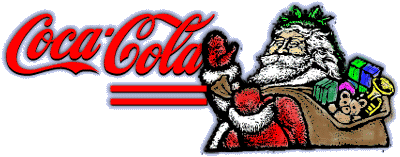

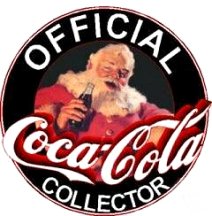
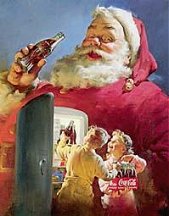
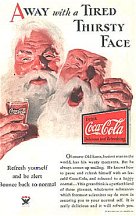
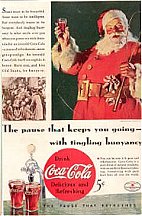
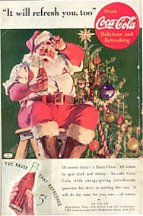
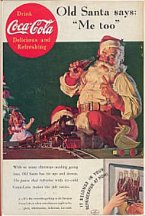
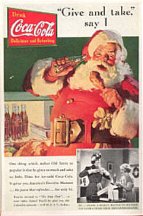
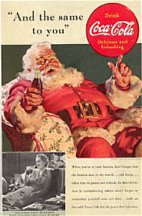
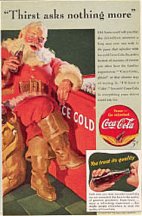
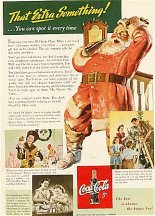
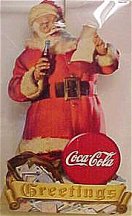
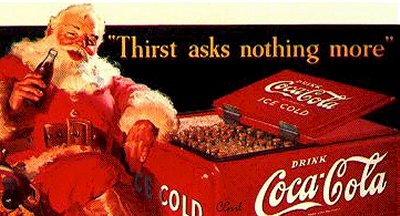
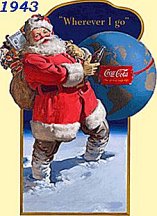
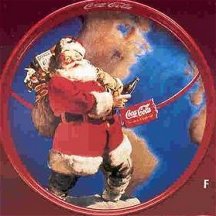
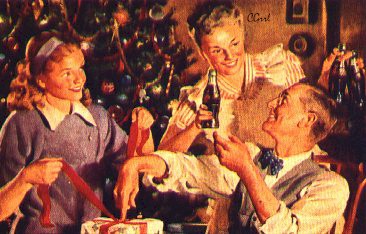
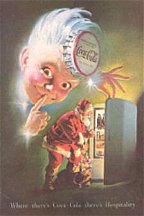
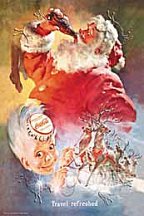
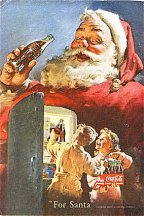
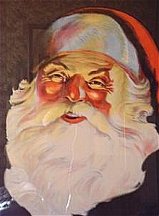
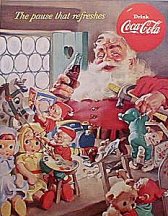
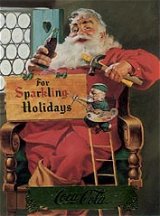
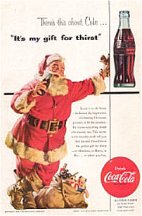
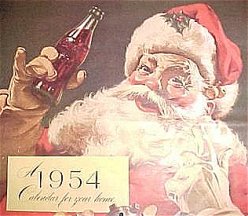
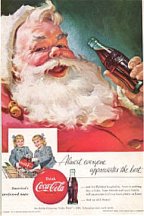
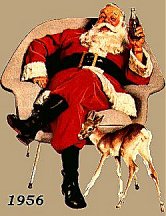
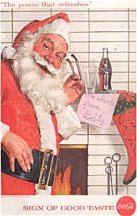
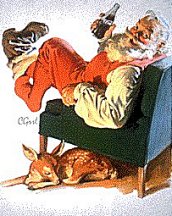
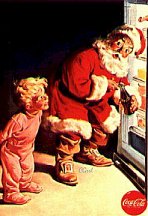
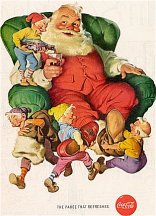
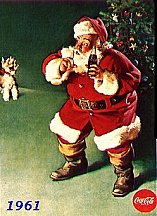
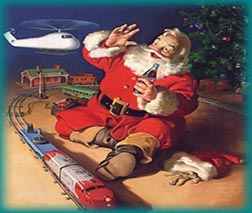
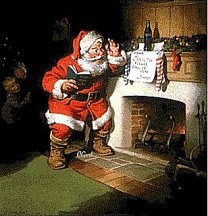
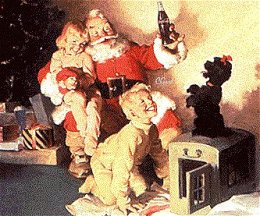
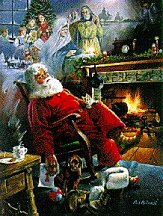

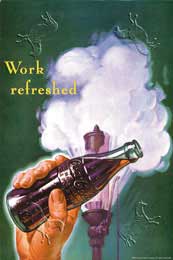
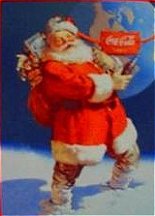

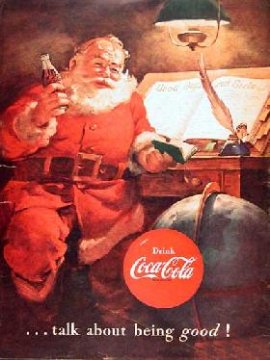
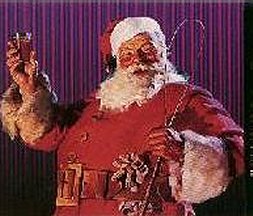
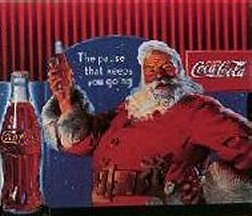
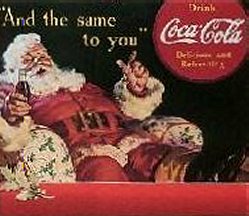
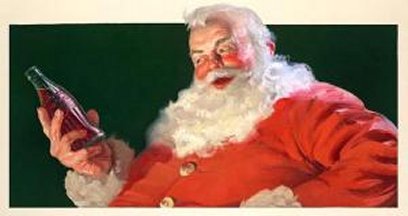
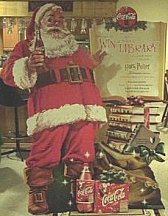
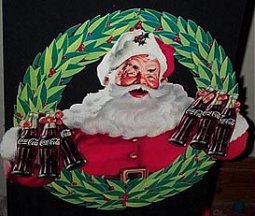
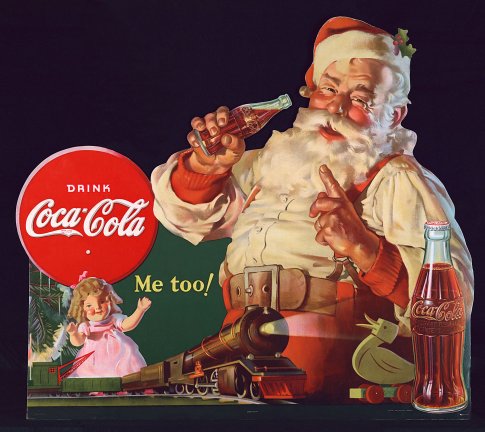
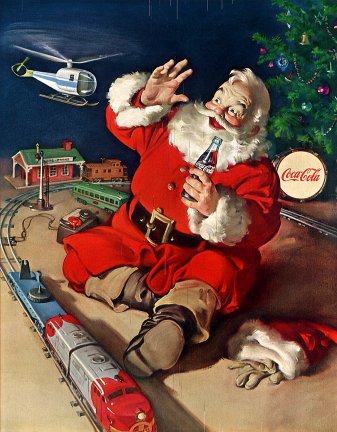
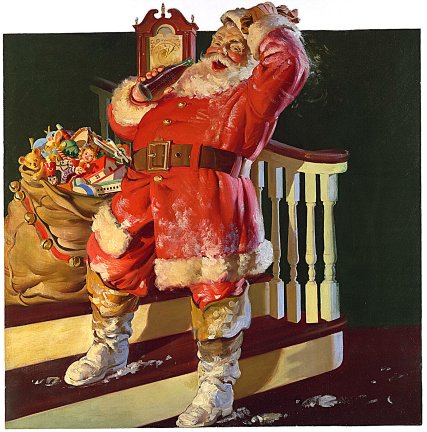
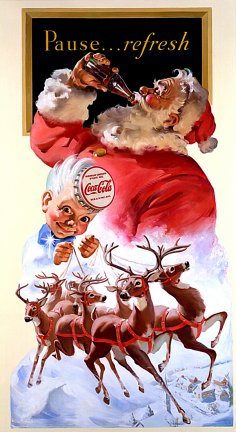
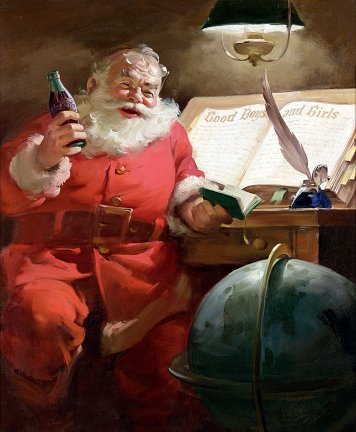
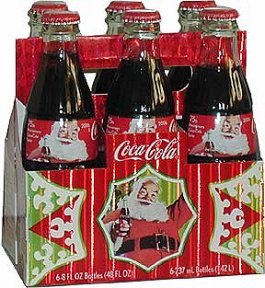
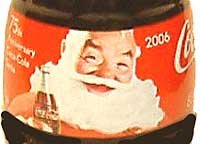
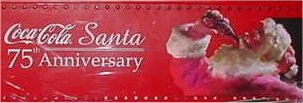
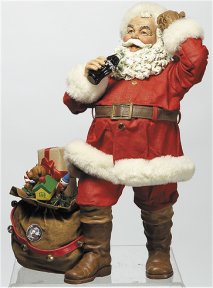
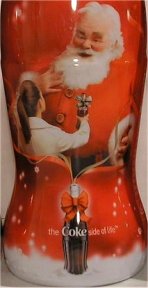
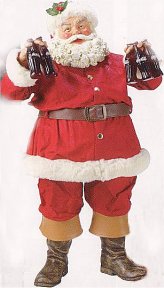
![]()
![]() [
[